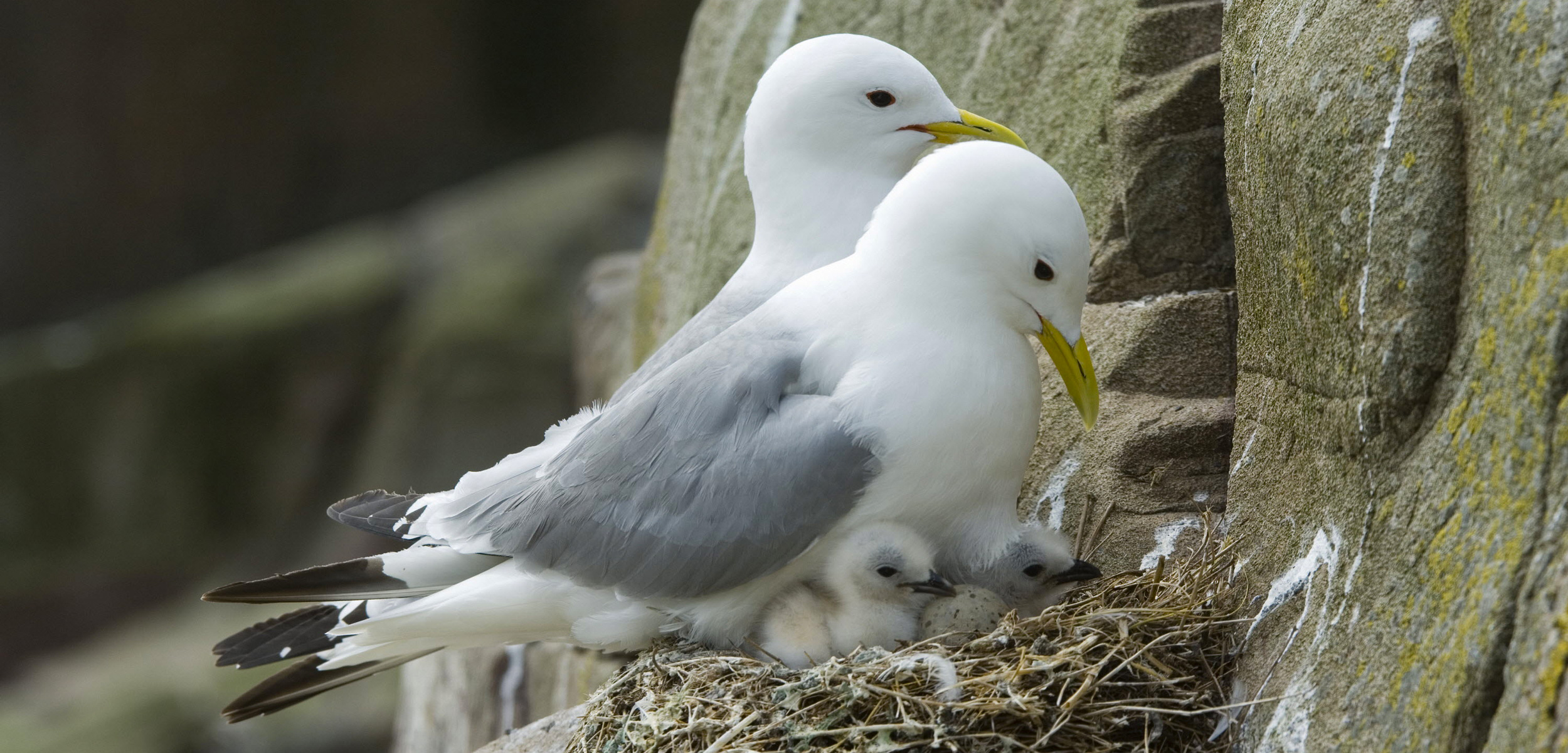Why Pair Bonding Seabirds Break Up
New research explores the upside of divorce for pair-bonding seabirds.
Article body copy
The lives of Arctic seabirds are never easy, but the breeding season is especially hard. After months or even years at sea, free to follow wherever prey and favorable weather may lead them, the urge to mate calls them to shore. From that point on, until their young leave the nest, these creatures of sea and sky find themselves tethered to the land, and subject to all of its dangers.
Seabirds live a long time—often decades—and have multiple chances to breed. These long lives, and the struggles of raising chicks in some of the harshest conditions on Earth, have made the bonds between mating seabirds particularly strong. In many species, successful couples stay together for multiple seasons. Some even mate for life.
Long-term pair bonds give seabirds a number of distinct advantages, says Carin Bondar, a biologist at the University of the Fraser Valley in British Columbia who has written several books about animal sex, by email: “Couples that have been together longer have the added bonus of partner familiarity and greater chances of reproductive success.”
But “divorce” does exist in the seabird world. And now, a new study helps explain when and why seabird couples split—and why, in some situations, it might not be such a bad thing.
Researchers from the Norwegian Polar Institute and Arctic University of Norway have been monitoring seabird colonies in the Arctic and Antarctic since 2005. In their latest project, led by ecologist Guillaume Mercier, the team analyzed the conditions that lead to divorce in five species: Brünnich’s guillemots, glaucous gulls, Antarctic petrels, south polar skuas, and black-legged kittiwakes. In the first four species, the scientists found that divorce is so rare that it was impossible to get a meaningful sample size. Not so for kittiwakes.
Kittiwakes are significantly more likely to divorce—nearly 20 percent of the couples eventually split. Divorce, the researchers found, is much more likely if a couple loses an egg or young chick.
Despite the benefits of long-term pair bonds, Bondar, who was not involved in the research, says the finding that kittiwakes divorce after losing a chick makes sense. “Seabirds, and especially those in frigid northern environments, have a really difficult task: finding enough food to sustain a nest of chicks. During poor resource years, both parents need to work hard to make sure that they can sustain the chicks. If the chicks die, both parents realize zero biological success.”
Sébastien Descamps, a coauthor on the paper, says that despite the consequences of breaking up, divorcing after losing a chick may actually benefit the birds in the long run. “Divorcing is not something negative in wildlife, as this may improve the future breeding success,” he says. Divorce is certainly a risk, but it’s also an opportunity to find a better mate.

